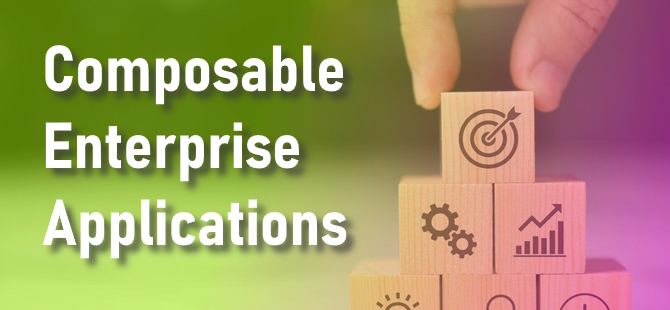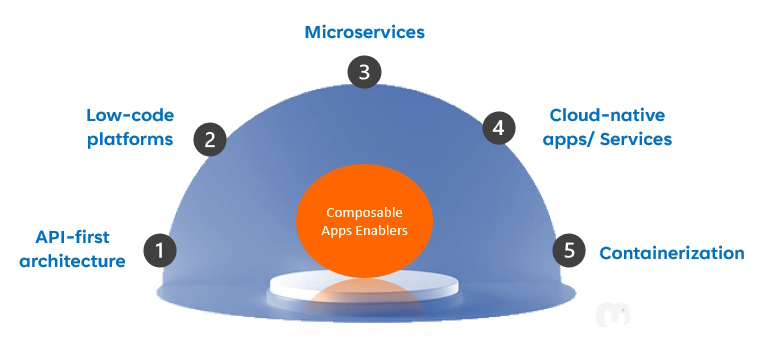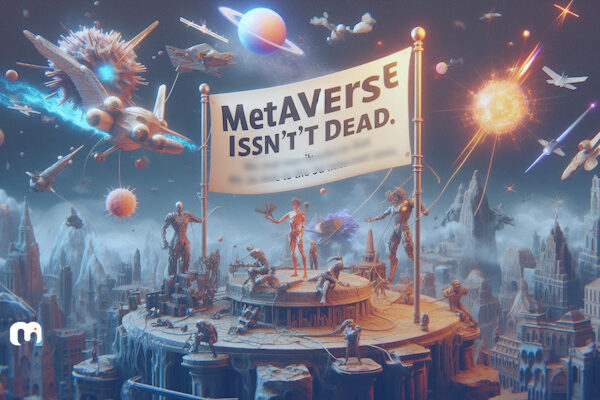
Composable applications help reduce the operational complexity of traditional workloads and increases the Business Agility.
Back at the end of 2021, there was a fair buzz about “Composable Applications”, when analysts’ predicted that the concept would have a significant impact in the years to come.
Composability is a design principle that builds a whole from individual modular parts. Businesses can be composable and so can be apps.
APIs, after all existed for a long time, and reusability of code is not a new idea either. So why is there a new label of “Composability” on top? How is this different?
With the advent of multi-channel user engagement, infrastructure as code, and various other advancements, software development teams needed to rethink how applications are built. Today, composability runs throughout the entire application stack, and it is achieved through the assembly and combination of packaged business capabilities (PBCs) as termed by Gartner. PBCs are nothing but purpose-built application building blocks, that have been purchased or developed.
Composable enterprise applications, are built from independent building blocks or microservices, which can be easily assembled and reassembled to create custom solutions quickly and easily. This approach enables developers to focus on building small, but independent reusable blocks that can be assembled anytime to cater to specific business needs.
Composable apps enable organizations to take advantage of the latest technologies and services, including cloud computing, APIs, and microservices, to build and deploy applications faster and more efficiently.
Let’s consider the example of a cloud service like Amazon S3. S3 is an object storage service that serves a single purpose of storing objects reliably and securely. It is good example of a completely built business capability in all aspects including authentication, security, scalability and so on. So, if you need to use S3 as part of your application building process, you can easily or readily integrate it, just with an API call. Public cloud infrastructure services like Amazon, Azure and Google are a good example of composable architecture. I just took this example of cloud service because everyone could easily relate it. Similarly, these PBCs can be anything related to your business. For example, customer management, order management etc.
Key Components of Composable Enterprise Applications
Low-code platforms: Low-code platforms enable business users with little or no coding experience to build custom apps using visual interfaces and pre-built building blocks. These building blocks can be combined in various ways to create custom solutions quickly and easily.
Integrating existing application programs is much easier with low-code platforms because they have already built a strong library of APIs for exactly this purpose. Low code is the perfect workbench for enterprises that want to become composable. It can help build powerful, easy-to-integrate applications without disrupting business.
Microservices: Microservices are small, independent services that can be developed and deployed independently of each other. They can be combined and orchestrated to create custom solutions that meet specific business needs.
API-first architecture: APIs (Application Programming Interfaces) are building blocks that allow software applications to communicate with each other. An API-first architecture enables developers to design APIs first and then use them as building blocks to create custom solutions.
Cloud-native apps: Cloud-native apps are designed to run on cloud infrastructure and take advantage of cloud-based services. They are built using microservices and APIs and can be composed and reassembled to create custom solutions.
Containerization: Containerization is a method of packaging software applications and their dependencies into containers. These containers can be combined and reassembled to create custom solutions quickly and easily.
Key benefits
- Allows developers to build and deploy new features quicker, faster, cheaper, and with minimal disruption.
- PBCs bring about consistency across all apps.
- Repurposing existing programs and code helps to reduce the burden of new development.
- Enables greater collaboration between teams, as each team can focus to build and maintain specific building blocks / services.
- Encourages greater reuse of code.
- Fewer errors as PBCs are tested extensively.
- Promotes citizen development.
Analyst prediction says, composable applications are expected to grow to $95.98 bn by 2030, across segments be it healthcare, banking, manufacturing, or IT. Overall, composable apps enable businesses to quickly and easily create custom solutions that meet their specific needs, thereby increasing business agility. They are modular, flexible, and scalable, and can be assembled and reassembled as needed to keep up with changing business requirements.
Thanks for Reading. Stay Tuned!

Look forward to connecting with you!
Finally, “subscribe” to my newsletter, so that you get notified every time when I publish.
Check out some of my videos here, and do subscribe to my channel.




